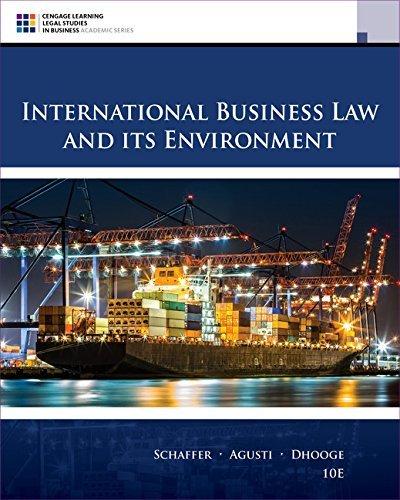For 50 years prior to this case, India had placed complex restrictions on the import of agricultural,
Question:
1. Compare the system of import licensing in effect in India during that time to what you know in the United States today. Are there any industries you can think of in the United States that are subjected to import licensing? What industries are so highly regulated?
2. Why did the licensing scheme violate Article XI?
3. What causes a balance-of-payments problem, and why can this be a critical problem for many developing countries?
4. Why did the panel not accept India's balance-of-payments argument?
Fantastic news! We've Found the answer you've been seeking!
Step by Step Answer:
Related Book For 

International Business Law And Its Environment
ISBN: 9781305972599
10th Edition
Authors: Richard Schaffer, Filiberto Agusti, Lucien J. Dhooge
Question Posted:





